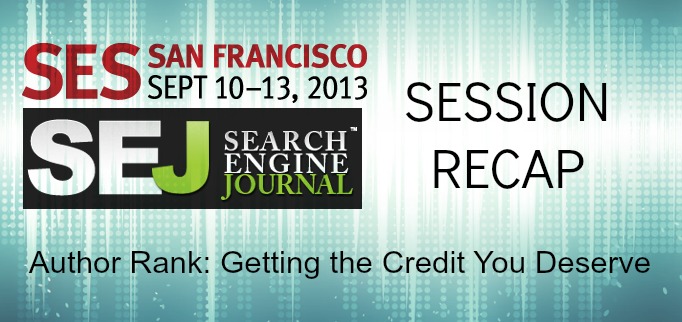
The last Earned track of the day was Author Rank: Getting the Credit You Deserve, presented by Eric Enge, CEO, Stone Temple Consulting, and Shari Thurow, Founder & SEO Director, Omni Marketing Interactive. Enge began with a brief introduction to author rank, stating that authorship is basically creating a tie between content you write across the web and your Google+ profile.
The two most current methods to establish authorship are:
- Link between Google+ profile to external site home page
- Individual post also has a rel=author tag to link to author’s Google+ profile
There is also an email method: verify your email addresses on Google+, then Google will detect when individual posts on external sites have a verified email address in post attribution.
When setting up your author snippets, be sure to test via Google’s Structured Data Testing Tool.
Authorship is more than Rel=Author
Enge also stated that authorship is more than just using the rich snippets. Google looks at bylines (by name) too, even if they don’t have a rel=Author tag. To make your content stand out (whether it has authorship markup in it or not): differentiate what you have to say, measure what kind of engagement you are getting, and help people who need it.
Creating dialog on Google+ is also useful. If your content is creating dialogs, you’re doing the right thing. Enge also recommended building long-standing relationships with online publications instead of publishing 1000s of one-time guest posts. For instance, being a columnists for NYTimes.com is better for authorship than getting a single article published on the same site. Another part of building relationships is also interacting with influencers in your industry, who may accelerate the process of getting more exposure for your Google+ profile and published online content.
How PageRank Flows in G+
Enge stated that Google+ profiles have pagerank. This is important because in the status sharing box, sharing links using the link button in status updates don’t have a nofollow link, meaning your Google+ profile pagerank passes juice to the link you are sharing.
He also recommends trying to get more engagement via +1s on your status and shared links on Google+, as it will expose more content to you and people in your network. Engagement can also be furthered by being active in Google+ communities (which are similar to LinkedIn groups). Enge believes that there is a connection between how active you are on Google+ and author rank, and also predicts that we will see a PublisherRank, shown by the recent in-depth article snippets that Google rolled out.
Recommendations for Content
Thurow had several recommendations for optimizing content online, including:
- Spell out acronyms, especially on the author page.
- Make headings and title tags that reinforce each other
- Limit the number of stop words in URLs
- Link previous related articles that you’ve already written in your content
- Make sure you have duplicate title tags on pagination archives
Main Session Takeaways
- You need to tell humans as well as machines who you are
- Have a complete Google+ profile that is active
- Have the rel=Author tag established on your blog/website, as photos in search results gives your content more visibility.




